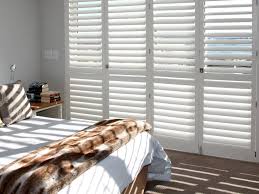In today’s fast-moving world, home automation is no longer a luxury—it’s a lifestyle upgrade. Among the many innovations in smart home technology, electric blinds powered by rechargeable batteries are transforming how we experience light, privacy, and comfort at home. Whether you’re designing a modern apartment, upgrading an office, or simply looking for energy efficiency, battery-powered electric blinds offer a sleek and practical solution.
This article explores how electric blinds battery work, their advantages, charging options, maintenance tips, and why they’re the future of window treatments.
What Are Electric Blinds Batteries?
Electric blinds are window coverings operated by an electric motor rather than manual cords or chains. When powered by a battery pack, these blinds can be controlled with a remote, smartphone, or smart home system—without needing a direct electrical connection.
The battery serves as the main energy source for the motor. Typically, it’s either a rechargeable lithium-ion battery or a replaceable alkaline battery pack concealed within the headrail of the blind, maintaining a clean and cordless look.
In simple terms, the battery transforms your blinds into wireless, motorized window treatments, making them safer, easier, and more stylish to operate.
How Do Electric Blinds Batteries Work?
Battery-powered blinds work on a simple mechanism. The motor inside the blind uses power from the battery to roll or tilt the blind. You can trigger this movement using:
- A remote control
- A wall switch
- A mobile app
- Or voice control through systems like Alexa, Google Assistant, or Apple HomeKit
Most rechargeable batteries for electric blinds can last 6 to 12 months on a single charge, depending on usage frequency and blind size. When the battery runs low, you simply connect it to a charger via USB or a small adapter plug.
Some advanced systems even include solar charging panels, which automatically recharge the battery using sunlight—ideal for hard-to-reach windows or eco-conscious homes.
Benefits of Using Battery-Powered Electric Blinds
1. No Hardwiring Required
One of the biggest advantages is easy installation. You don’t need to hire an electrician or open up walls for wiring. Just mount the blinds, install the battery, and connect it to your controller.
This makes battery-powered blinds perfect for rental properties, offices, or existing homes where electrical wiring isn’t convenient.
2. Clean, Cordless Design
With no visible cords or cables, battery-operated blinds create a sleek, minimalistic look. They also eliminate the safety hazards of hanging cords, making them child- and pet-safe.
3. Smart Control Options
You can integrate electric blinds with smart home ecosystems like Amazon Alexa, Google Home, or Apple HomeKit. This allows you to schedule automatic opening and closing times, optimize natural light, or adjust privacy settings remotely.
Imagine waking up to soft daylight automatically filtering through your windows—without lifting a finger.
4. Energy Efficiency and Comfort
Motorized blinds help regulate indoor temperatures by controlling how much sunlight enters your space. During summer, they can automatically close to keep heat out, reducing air-conditioning costs. In winter, they open to capture natural warmth.
By pairing them with smart sensors or schedules, you can significantly improve energy efficiency in your home.
5. Low Maintenance and Longevity
Modern lithium-ion batteries are built to last for years with minimal maintenance. You only need to recharge them occasionally, and most systems notify you when the battery is running low.
Types of Electric Blind Batteries
1. Rechargeable Lithium-Ion Batteries
These are the most common and efficient option. They are lightweight, long-lasting, and can be recharged hundreds of times. Most brands use a USB charging cable or magnetic charger that easily connects to the blind headrail.
2. Replaceable Battery Packs
Some blinds use AA alkaline batteries stored in a small tube or compartment. They’re simple to replace but less eco-friendly and may require more frequent changes.
3. Solar-Powered Batteries
An eco-conscious option that uses a small solar panel to continuously recharge the battery using daylight. This setup is ideal for hard-to-reach blinds or windows with good sun exposure.
How Long Do Electric Blind Batteries Last?
Battery life depends on several factors:
- Size and weight of the blind (heavier blinds require more power)
- Frequency of use
- Type of fabric (light-filtering vs blackout)
- Motor efficiency
Generally, most rechargeable battery packs last 6 to 12 months per charge, while solar-powered ones can run indefinitely with adequate sunlight. Over time, lithium-ion batteries retain high performance for up to 5 years or more before needing replacement.
Maintenance and Charging Tips
To keep your electric blinds running smoothly:
- Charge the battery fully before first use.
- Avoid overcharging—disconnect once the indicator shows full.
- Clean solar panels regularly if using solar-charged batteries.
- Operate the blinds periodically to prevent the motor from stiffening during long idle periods.
- Check battery connections if the blinds respond slowly or not at all.
Many modern models include battery status indicators in their apps or remotes, so you can monitor charge levels easily.
Can You Replace the Battery Yourself?
Yes—battery replacement or recharging is typically DIY-friendly. Most systems are designed with easy-access ports or detachable packs. However, for built-in or concealed battery designs, you may need professional service if the battery eventually needs replacement.
If your blinds are under warranty, always check with the manufacturer before replacing components yourself.
Best Places to Use Electric Blinds with Battery Power
- Bedrooms – Enjoy quiet operation and effortless morning light control.
- Living rooms – Maintain privacy and ambiance with voice-activated adjustments.
- Offices – Improve comfort and reduce glare without disrupting workflow.
- Skylights and high windows – Battery power removes the need for complicated wiring.
The Future of Electric Blinds Batteries
With advancements in battery technology and home automation, electric blinds are becoming smarter and more efficient. We can expect faster charging, longer-lasting batteries, and AI-powered light control that adapts to daily routines and weather conditions.
As sustainability becomes a key focus, solar and rechargeable options will dominate the market, offering both convenience and eco-friendliness.
Final Thoughts
Electric blinds powered by rechargeable batteries combine innovation, style, and practicality. They’re easy to install, energy-efficient, and compatible with smart home systems—offering modern comfort without messy wiring.
Whether you’re upgrading your living space or automating your office, investing in battery-operated electric blinds is a step toward a smarter, more sustainable lifestyle.




